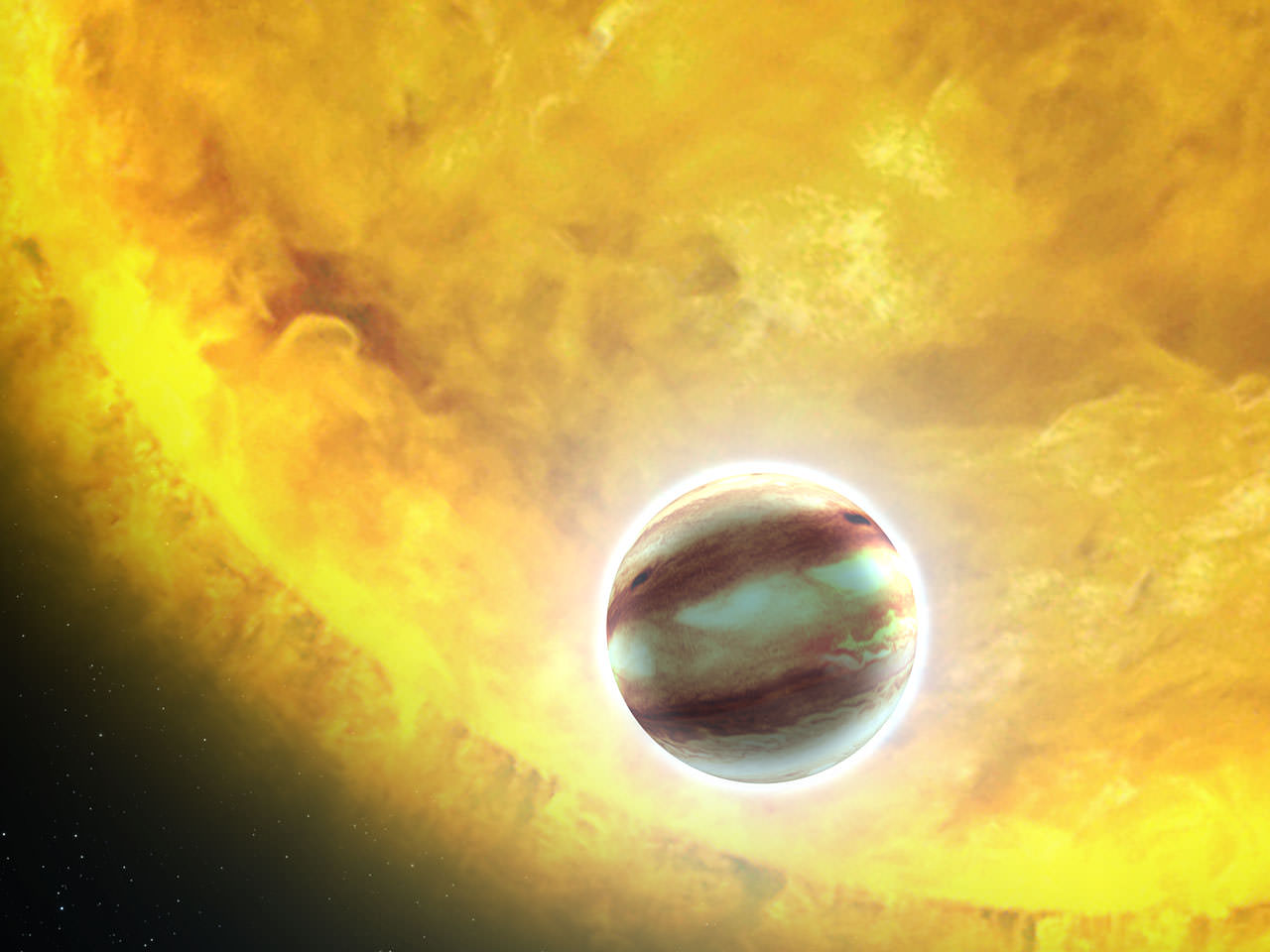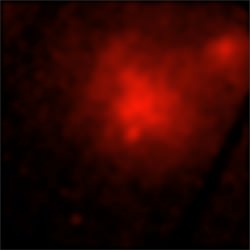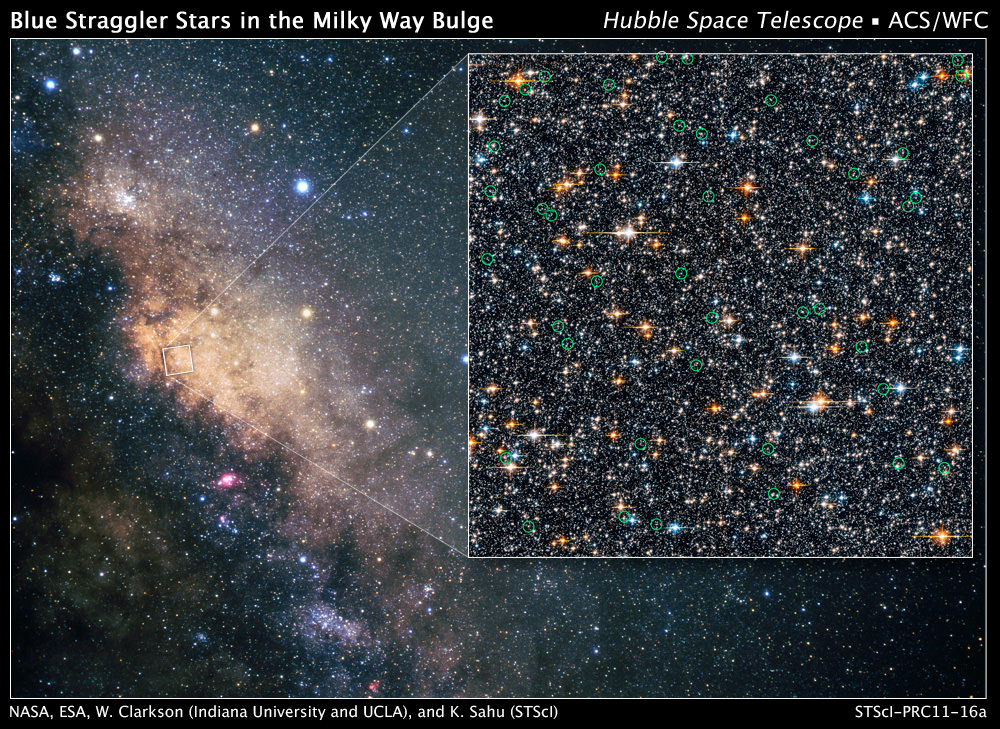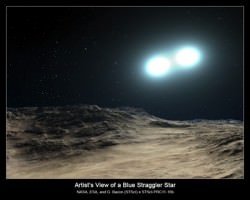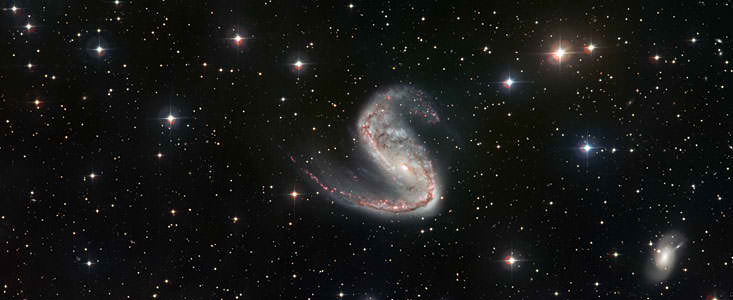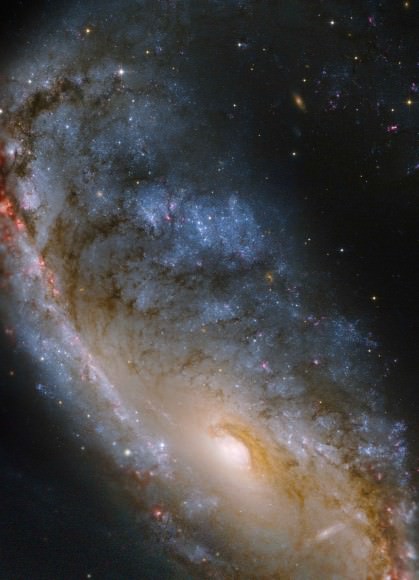[/caption]
After 21 years in orbit, the Hubble Space Telescope has reached an historic milestone: the venerable HST has made its millionth observation. The telescope was used to search for the chemical signature of water in the atmosphere of planet HAT-P-7b, a gas giant larger than Jupiter which orbits the star HAT-P-7, about 1,000 light-years away from Earth. The observation was led by Dr. Drake Deming, planetary scientist and astronomer from the University of Maryland and the Goddard Space Flight Center.
With this announcement, however, there is no stunning image or unprecedented view of an exoplanet. The millionth observation will show up as squiggly lines on a graph, since the observation was done with Hubble’s spectrograph.
Spectroscopy is the technique of splitting light into its component colors, and the gases present in a planet’s atmosphere leave a fingerprint in the form of the distinctive color patterns that different gases absorb. Analyzing this data can give precise measurements of which elements are present in the exoplanet’s atmosphere.
“We are looking for the spectral signature of water vapor. This is an extremely precise observation and it will take months of analysis before we have an answer,” said Deming. “Hubble has demonstrated that it is ideally suited for characterizing the atmospheres of exoplanets and we are excited to see what this latest targeted world will reveal.”
“With a million observations and many thousands of scientific papers to its name, Hubble is one of the most productive scientific instruments ever built,” said Alvaro Gimenez, head of science and robotic exploration for the European Space Agency. “As well as changing our view of the Universe with its stunning imagery, Hubble has revolutionized whole areas of science.”
Hubble’s on-orbit history began when it was launched on the space shuttle Discovery on April 24, 1990. The HST has collected over 50 terabytes of data, enough to fill more than 10,000 DVDs. While the the data collected in the one millionth observation is now proprietary for the scientists, within a year, it will be released to the public. The huge and varied library of data Hubble has produced is made freely available to scientists and the public through an online archive at his link:
Hubble made the millionth observation using its Wide Field Camera 3, a visible- and infrared-light imager with an on-board spectrometer. It was installed by astronauts during the Hubble Servicing Mission 4 in May 2009.
More Hubble info and images can be found at the HubbleSite, and ESA’s Hubble website.

